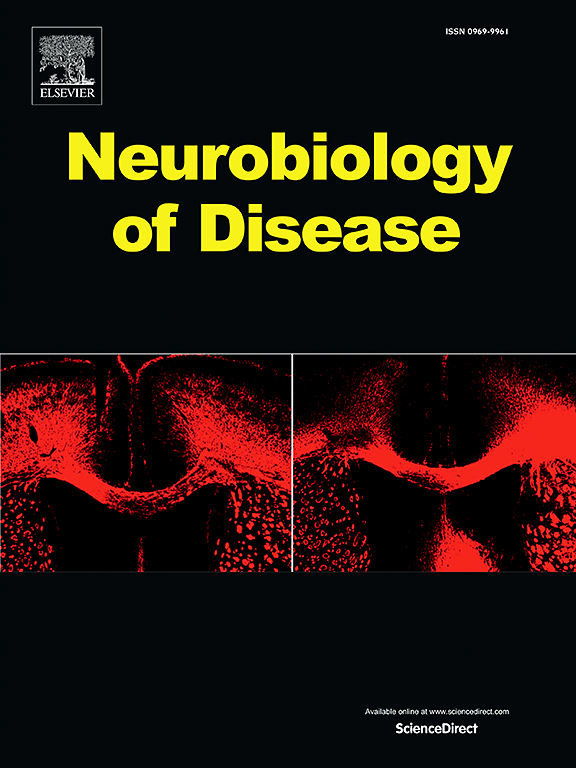脑白质微结构异常在脑血管疾病负担与认知障碍关系中的中介作用。
IF 5.6
2区 医学
Q1 NEUROSCIENCES
引用次数: 0
摘要
背景:通过磁共振成像(MRI)标记物评估,白质(WM)微结构恶化与较高的总脑血管病(CSVD)负担相关,并且CSVD患者认知能力下降更为明显。然而,心血管疾病负担、认知障碍和WM变化之间的关系尚不清楚。我们的目的是表征不同CSVD负担患者的WM微结构异常,并探讨不同CSVD负担与认知能力下降的联系机制。方法:本研究纳入56例重度CSVD患者(CSVD-s)、109例轻度CSVD患者(CSVD-m)和81例健康对照。我们利用弥散张量成像(diffusion tensor imaging, DTI)和基于束的空间统计技术检测各组间WM弥散变化,探讨不同CSVD负荷、WM弥散变化与认知功能之间的关系,特别是定量分析WM微结构改变对CSVD负荷和认知功能的可能中介作用。结果:CSVD-s组小腹、双侧丘脑前辐射(ATR)、上纵束(SLF)、皮质脊髓束(CST)和额枕下束(IFOF)的FA显著降低,AD、RD和MD显著升高。简单中介模型显示,小钳子和右侧IFOF的平均MD值、左侧CST和右侧IFOF的平均FA值以及左侧CST、SLF和右侧IFOF的平均RD值部分介导了CSVD负担与多项认知评分之间的相关性。结论:我们的研究结果为干预和改善不同CSVD负担患者的认知功能障碍提供了潜在的神经影像学靶点。本文章由计算机程序翻译,如有差异,请以英文原文为准。
The mediation effects of white matter microstructural abnormalities on the associations between cerebral small vessel disease burden and cognitive impairment
Background
White matter (WM) microstructural deterioration is associated with a higher total cerebral small vessel disease (CSVD) burden, as assessed by magnetic resonance imaging (MRI) markers, and with more pronounced cognitive decline in CSVD patients. However, the relationships among CSVD burden, cognitive impairment and WM changes remain unclear. We aimed to characterize WM microstructural abnormalities in patients with different CSVD burdens and investigate the mechanism linking different CSVD burdens to cognitive decline.
Methods
This study included 56 patients with severe CSVD burden (CSVD-s), 109 patients with mild CSVD burden (CSVD-m) and 81 healthy controls. We used diffusion tensor imaging (DTI) and tract-based spatial statistics to detect WM diffusion changes between groups and then explored the relationships between different CSVD burdens, WM diffusion changes and cognitive function, especially to quantitatively analyze the possible mediating effect of WM microstructural alterations on CSVD burden and cognitive function.
Results
The CSVD-s group presented significantly decreased FA and increased AD, RD and MD in the forceps minor, bilateral anterior thalamic radiation (ATR), superior longitudinal fasciculus (SLF), corticospinal tract (CST) and inferior fronto-occipital fasciculus (IFOF). The simple mediation model revealed that the mean MD value of forceps minor and right IFOF, the mean FA value of the left CST and right IFOF, and the mean RD value of the left CST, SLF and right IFOF partially mediated the correlations between the CSVD burden and multiple cognitive scores.
Conclusions
Our findings offer potential neuroimaging targets for intervening in and improving cognitive dysfunction in patients with different CSVD burdens.
求助全文
通过发布文献求助,成功后即可免费获取论文全文。
去求助
来源期刊

Neurobiology of Disease
医学-神经科学
CiteScore
11.20
自引率
3.30%
发文量
270
审稿时长
76 days
期刊介绍:
Neurobiology of Disease is a major international journal at the interface between basic and clinical neuroscience. The journal provides a forum for the publication of top quality research papers on: molecular and cellular definitions of disease mechanisms, the neural systems and underpinning behavioral disorders, the genetics of inherited neurological and psychiatric diseases, nervous system aging, and findings relevant to the development of new therapies.
 求助内容:
求助内容: 应助结果提醒方式:
应助结果提醒方式:


